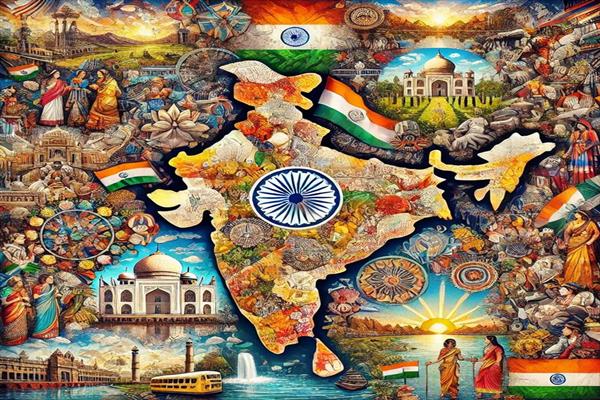
15-Jul-2025 , Updated on 7/15/2025 11:18:30 PM
What Makes Indian Culture So Rich?
Millennia of Continuous Traditions
The continuity of traditions throughout thousands of years is most important in Indian culture as it directly contributes to the richness of traditions of the culture. It has a basis upon this unsurpassed continuity, which lived through conquest, mass movement and societal transformation. Old literary material, such as the Vedas, the Upanishads and epics, e.g. Ramayana and the Mahabharata, have been maintained and are studied actively. Classical or ancient arts such as music, dance are based on thousand-year-old treatise texts of works such as Natya Shastra. Cultural memory of rituals, festivals and everyday practices based on ancient patterns of the agrarian cycle and spiritual beliefs are evidenced. The influence of subsequent cultures into this stable structure without abolishing the basis forms a distinct very rich heritage.
Philosophical and Spiritual Depth
Indian culture is rich mainly because of its strong philosophical and spiritual roots. The traditions are millennia old and discover basic questions of being, consciousness, Karma, Dharma and Moksha, providing many ways of finding the truth. The worldview is impregnated with principles such as ahimsa (non-violence), and interconnectedness. More importantly, the culture is multi-centered: there are the traditions of polytheism and single focus and negligence in philosophy. It is a spice of utterance that generates a combination of intellectual tolerance. The rich spiritual sources allow supplying the civilization with the ever-flowing sources of ethical constructs, which enable it to remain vital and unique.
Regional Artistic Expressions Flourishing
The cultural complexity of India is inseparably connected with its regional artistic traditions. Vertical scrolls known as Patachitra of Bengal, Phad paintings of Rajasthan, Tanjore art of Tamil Nadu and Gotipua dance of Odisha are all created out of local history, setting and religion. They both retain their own aesthetic values, approach and stories transmitted with time. They have maintained the practice, both by involvement of the community and by modern adaptations, which shows how a culture can remain resilient. Such decentralization in creativity does not allow this country to homogenize, and India is still a mosaic of cultures. The local art at the very base helps to make the country an absolute treasure with pluralism being the ultimate strength itself.
Strong Familial and Social Structures
The rich culture thrives on strong familial and social structures in India. Centuries-old joint family systems created strong intergenerational bonds and shared responsibility allowing passing traditions, languages, religious and moral values. This hierarchy goes down to the level of the community networks of kinship, caste (jati), and communities. Such mutually dependent units offer critical social protection, arrange group festivals and performances, and guarantee group assistance. In turn, such closely knit networks develop a strong sense of belonging and group identification, and this is how distinctive cultural expressions are maintained over generations and geographical locations.
Synthesis of Diverse Influences
The main feature of Indian culture is its richness through millennium synthesis. Native customs gave deep roots. Subsequent pre-dispositions--Vedic, Persian, Greek, Central Asian, Mughal and European were presented. More importantly, it is not the case that these various elements were just thrown in, but instead, they were incorporated into it and transformed. They amalgamated, modified and innovated foreign ideas using the constant dynamism and made them uniquely Indian. This deep mix of vulnerable elements in the historical time gave rise to a complicated, stable, and multidimensional cultural quilt. The incarnation is the inner process which produced India with her unique cultural prosperity and stability in the face of the greatest variety.

Content Writer
Hi, I’m Meet Patel, a B.Com graduate and passionate content writer skilled in crafting engaging, impactful content for blogs, social media, and marketing.
Join Our Newsletter
Subscribe to our newsletter to receive emails about new views posts, releases and updates.
Copyright 2010 - 2026 MindStick Software Pvt. Ltd. All Rights Reserved Privacy Policy | Terms & Conditions | Cookie Policy